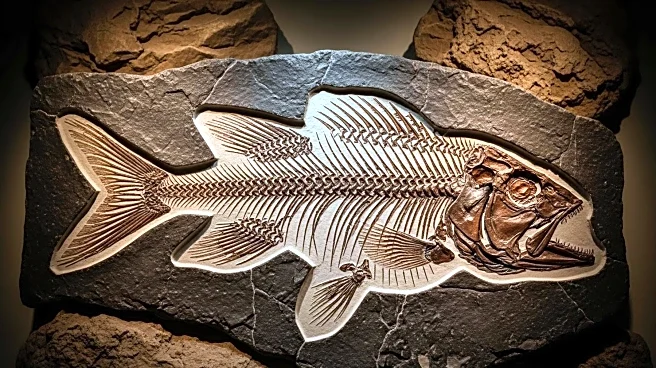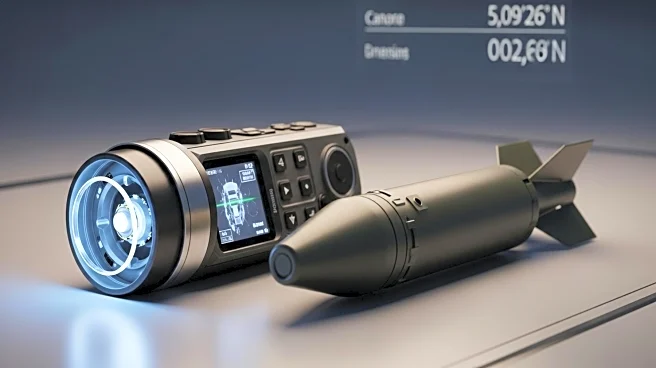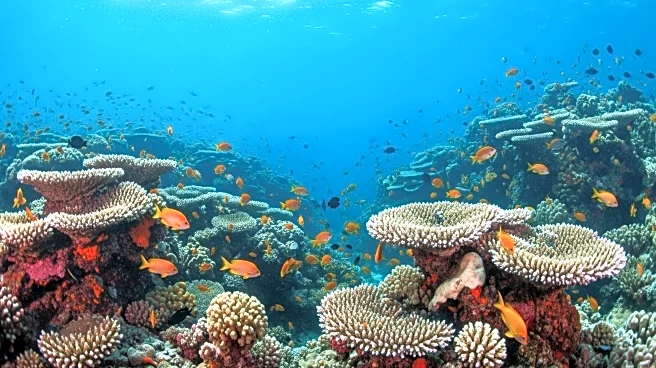What's Happening?
Divers in Indonesia have captured the first underwater images of the Sulawesi coelacanth, a species thought to be extinct for 70 million years. This discovery was made by Alexis Chappuis and Julien Leblond during a dive off the coast of North Maluku, Indonesia. The coelacanth, known for its ancient evolutionary roots, was found at a depth of 144 meters. This marks the first time the species has been filmed in its natural habitat, providing significant insights into marine biodiversity. The coelacanth is part of the Sarcopterygii clade, sharing a closer genetic relationship with land vertebrates than with modern bony fishes. The discovery highlights the species' fragile existence in the mesophotic zone, a deep-water band crucial for ancient species with low reproductive rates.
Why It's Important?
The discovery of the coelacanth in Indonesia underscores the critical need for marine conservation efforts. The species is listed as Vulnerable by the IUCN Red List, with threats from industrial fishing, plastic pollution, and deep-sea mining. The newfound attention could lead to unregulated eco-tourism, further endangering the species. The Indonesian Ministry of Marine Affairs is considering new guidelines to protect these ecosystems, but implementation will require regional funding and cooperation. This event emphasizes the importance of preserving biodiversity and the potential for undiscovered species in the deep sea.
What's Next?
Researchers plan to return in 2026 with non-invasive tools to gather more data on the coelacanth population. This includes environmental DNA sampling to determine if the Maluku coelacanths are part of a larger metapopulation. These findings could influence the establishment of marine protected areas and fishing regulations. The ongoing research aims to balance scientific discovery with conservation, ensuring the survival of this ancient species.










